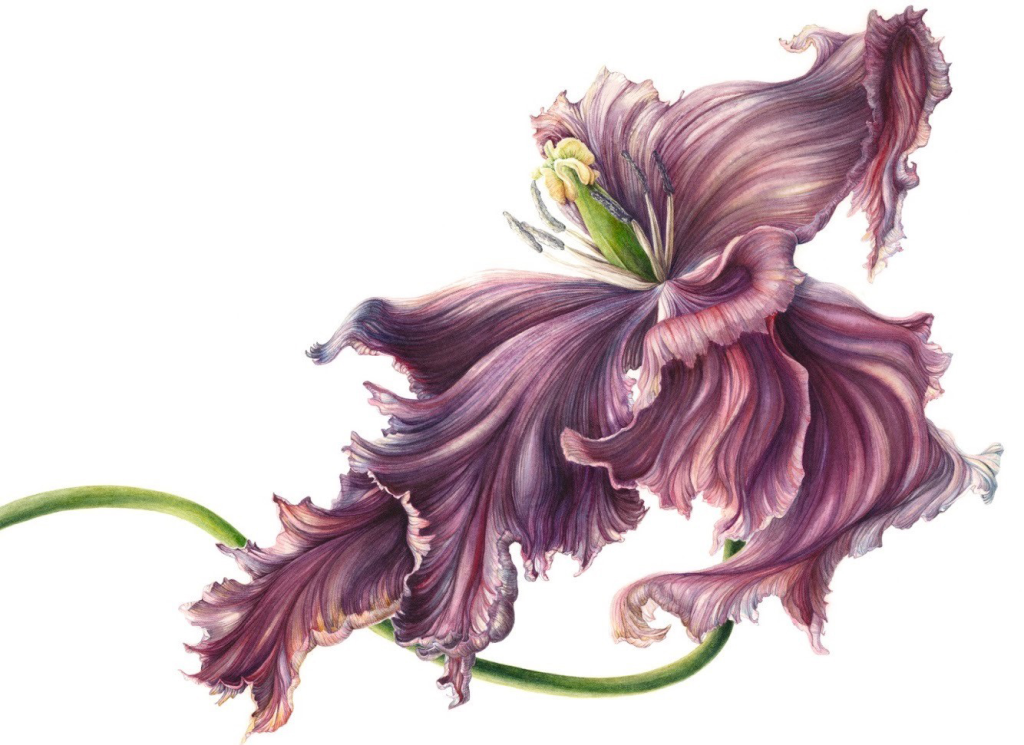Botanical art is a captivating form of expression that combines scientific accuracy with artistic finesse. In Ireland, this ancient art form has flourished over the centuries, leaving behind a rich legacy of stunning botanical illustrations. From the meticulous work of 17th-century artists to the contemporary creations of talented individuals, Irish botanical art has evolved and thrived. In this article, we will delve into the fascinating world of Irish botanical art, exploring its history, notable artists, and the enduring impact of their work.
The Early Pioneers: 17th-century Artists
Irish botanical art has a long and storied history, dating back to the 17th century. One of the early pioneers of this art form was James Gwim, an artist who not only contributed illustrations to Milton’s “Paradise Lost” but also made significant contributions to botanical art. Gwim’s work, along with other 17th-century artists, laid the foundation for the development of botanical illustration in Ireland.
William Kilburn: A Master of Botanical Illustration
One of the most prominent figures in Irish botanical art is William Kilburn, an 18th-century artist known for his exquisite watercolor drawings of native wildflowers. Kilburn’s botanical illustrations, featured in William Curtis’s “Flora Londinensis,” provided botanically accurate depictions of various plant species. His detailed drawings of a dandelion plant, for example, beautifully capture each stage of its life cycle, from tightly closed buds to fully open flowers and globe-shaped seed-heads.
Kilburn’s artistic talents extended beyond botanical illustration. He later became a renowned textile designer in the UK, leaving behind a lasting legacy in the world of art and design. His botanically-inspired designs, housed in the Victoria & Albert Museum’s collection of textiles, continue to inspire and influence artists and designers to this day.

Female Botanic Artists: Overcoming Challenges
While the names of male botanical artists like William Kilburn are well-known, the work of many talented Irish women artists remained relatively undiscovered until recent times. This is despite the increasing encouragement of botanical illustration as a fashionable hobby for educated upper-class women in the 18th, 19th, and early 20th centuries.
Ellen Hutchens, an Irish botanist, and illustrator, is a prime example of a remarkable woman whose contributions to botanical art were overshadowed by her male counterparts. Despite her isolated existence in Bantry, West Cork, Hutchens left behind a remarkable legacy of botanical knowledge and illustration. Her exquisitely detailed drawings of seaweeds gained recognition from none other than Charles Darwin, who considered her one of the greatest naturalists he had ever known.
Other female botanical artists, such as Lydia Shackleton and Lady Charlotte Wheeler-Cuffe, found avenues for their artistic talents through patronage and adventurous travels. Shackleton’s work, commissioned by the National Botanic Gardens in Glasnevin, showcased the garden’s collection of orchids. Wheeler-Cuffe, on the other hand, used her skills to document the botanical beauty of far-flung places during her journeys with her husband.
Mary Delany: A Gifted Artist and Gardener
Mary Delany, born in England but spending her formative years in Ireland, was a gifted artist known for her intricate flower studies. Delany’s career as an artist blossomed during her time in Ireland, where she developed a love for gardening. She became a master of the art of découpage, using hundreds of tiny pieces of paper to create botanically accurate illustrations of flowers. Her florilegium, a collection of nearly 1,000 flower studies, is now part of the British Museum’s collection, a testament to her remarkable talent and dedication.

Contemporary Irish Botanical Artists: A Thriving Community
In the early decades of the 21st century, female botanical artists greatly outnumber their male counterparts in Ireland. The Irish Society of Botanic Artists, established in 2014, has become a thriving organization that showcases the work of many talented artists. Their group exhibition, “Drawn from Nature: The Flowering of Botanical Art,” held at the National Gallery of Ireland, highlighted the masterful work of these artists.
Mary Dillon, Siobhán Larkin, Yanny Petters, Holly Somerville, and Jane Stark are just a few of the contemporary Irish botanical artists whose creations are celebrated in Patricia Butler’s book, “Drawn from Nature: The Flowering of Irish Botanical Art.” Each artist brings a unique perspective and style to their work, capturing the intricate beauty and complexity of the natural world.
The Enduring Impact of Irish Botanical Art
Irish botanical art goes beyond mere aesthetic appeal. It serves as a valuable record of natural history, documenting the flora and fauna of different eras. The detailed illustrations provide botanists with vital information, aiding in the identification and study of various plant species.
Furthermore, Irish botanical art has influenced and inspired numerous fields beyond botany and horticulture. From craft and design to ecology and natural history, the impact of botanical art extends far and wide. The timeless beauty of these illustrations continues to captivate and inspire artists, designers, and nature enthusiasts alike.
Conclusion
The art of botanical illustration has found a special place in the heart of Ireland. From the early pioneers to the contemporary artists, Irish botanical art has evolved, leaving behind a rich and diverse body of work. The contributions of both male and female artists have shaped the field, capturing the natural world’s beauty and intricacy. As we celebrate the work of these talented individuals, we are reminded of the enduring impact of botanical art and its ability to inspire and educate generations to come.

No comments! Be the first commenter?